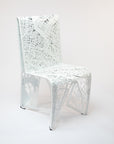
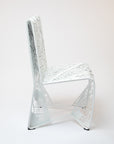
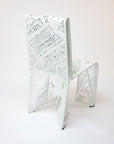
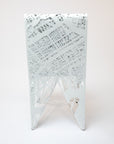
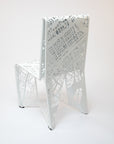
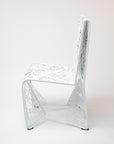
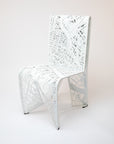
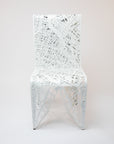



Aluminum Chair, Tokyo - Prototype (Traffic White)
This is a one-of-a-kind early prototype. Prototypes are sold as-is and have imperfections from testing and display. They are not guaranteed to withstand regular use and are sold to be displayed as art.
This Aluminum Chair prototype features four maps showcasing how Tokyo has evolved over the past 300+ years. This prototype is finished in Traffic White.
Material: Aluminum
Dimensions: 18½in L x 18in W x 36¾in H
Weight: 18.7lbs
Color: Traffic White
Prototypes are one-of-a-kind pieces that were handcrafted during our earliest days of design development. They are truly unique, fine art objects that can be shipped to your desired location upon ordering. Your lead time will be determined upon finalizing logistics.
Made From Four Layers of Historical Maps
OCCUPYING OVER 300 YEARS OF TOKYO HISTORY
Top Layer
2023
Tokyo is the world’s most populous city, with over 37 million people living in its metropolitan area.
As a global hub for finance, technology, and culture, it continues to drive Japan’s economy and influence worldwide trends. Skyscrapers and an extensive public transportation network define its urban landscape, blending seamlessly with historic temples and traditional districts. Technological advancements in robotics and artificial intelligence play an increasing role in everyday life.
Despite challenges such as an aging population and rising living costs, Tokyo continues to innovate, embracing sustainability and smart-city developments. The city thrives as a fusion of past and future, where ancient customs endure alongside cutting-edge advancements.
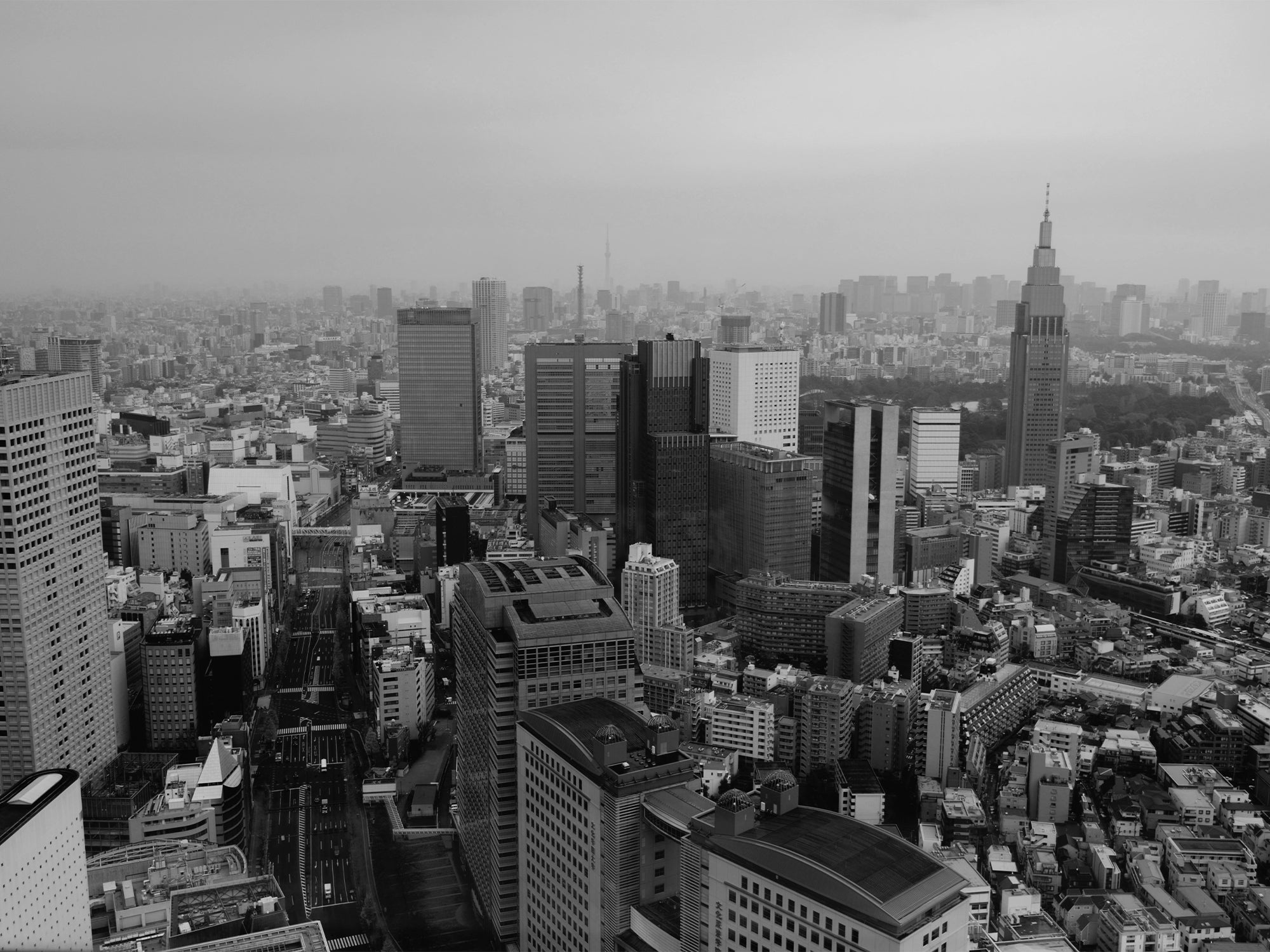

Second Layer
1905
Tokyo celebrates Japan’s victory in the Russo-Japanese War, a moment that cements the nation’s status as a global power. Military success brings territorial expansion, including control over Korea and parts of Manchuria, and earns Japan newfound international respect.
The city pulses with national pride, as industrialization and modernization continue to fuel economic and infrastructural growth. Factories, electric streetcars, and new institutions shape a rapidly changing metropolis. Western and Japanese influences merge in literature, fashion, and the arts, defining Tokyo’s emerging modern identity.
Political discourse intensifies, reflecting Japan’s ambitions on the world stage. The city remains a center of transformation, where tradition and innovation coexist.
Third Layer
1895
Tokyo stands at the forefront of Japan’s rapid modernization during the Meiji Period, emerging as an industrial and military power.
Railways, factories, and Western-style buildings reshape the urban landscape, replacing the once-dominant wooden structures of Edo. The recently concluded First Sino-Japanese War solidifies Japan’s international standing, demonstrating its military strength. Urbanization accelerates as new social classes emerge, including an expanding bourgeoisie and a growing industrial workforce.
The city’s economy diversifies, incorporating advanced manufacturing and global trade. Western influences permeate daily life, seen in clothing, literature, and education. Tokyo continues to evolve, balancing rapid change with its deep-rooted traditions.
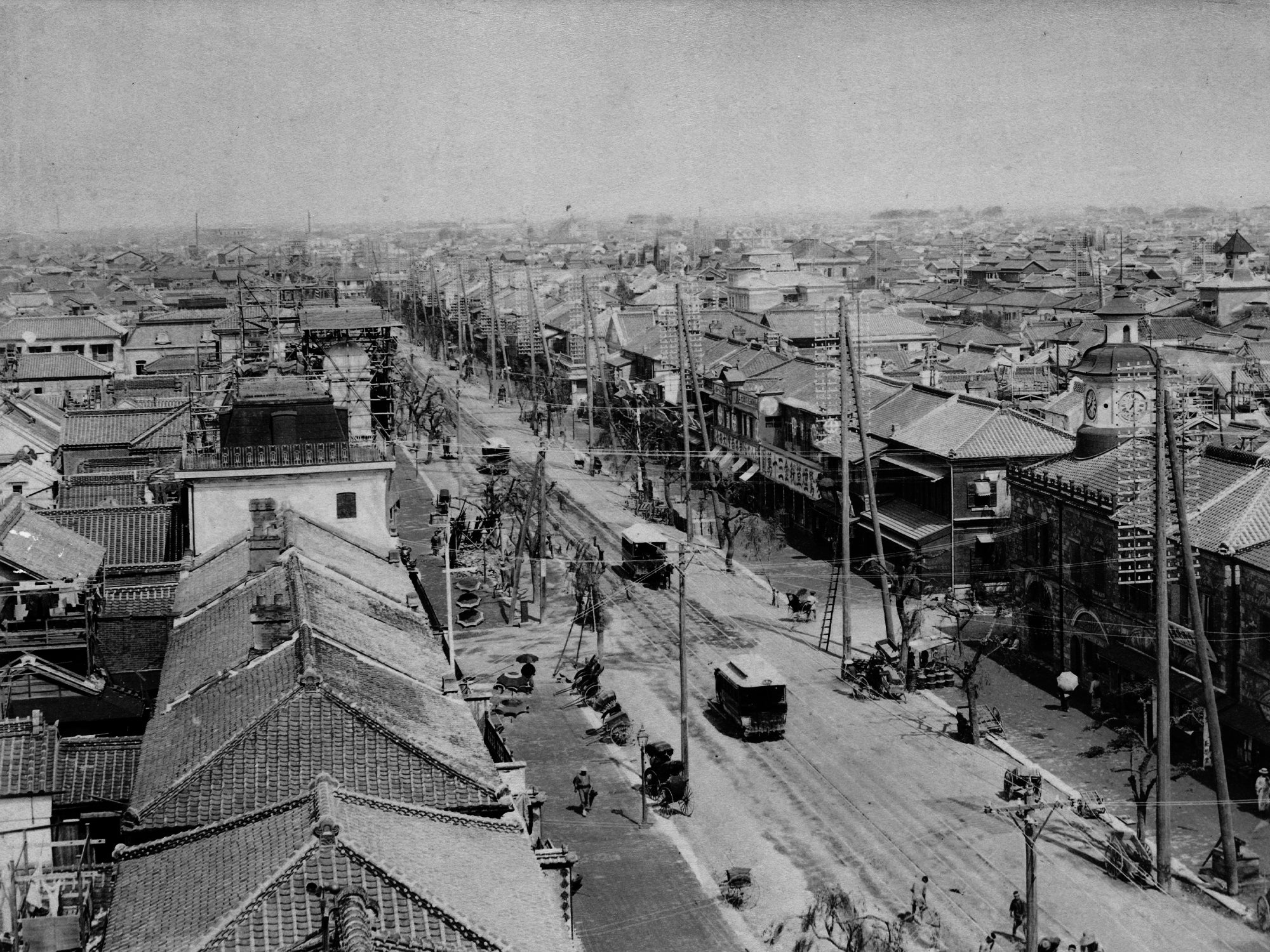
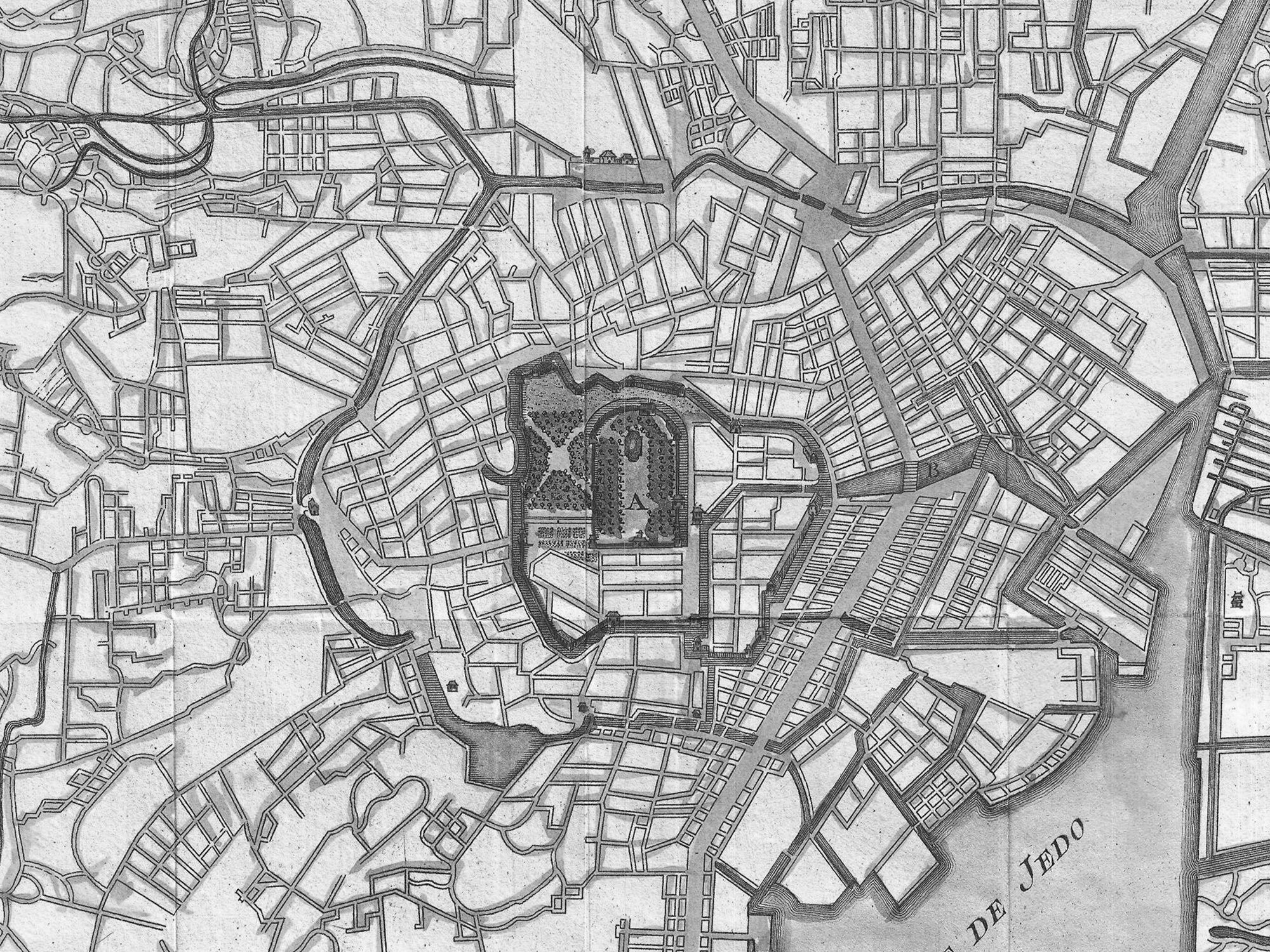
Bottom Layer
1721
Edo stands as the largest city in the world, with a population of approximately 1.3 million people.
The Tokugawa Shogunate maintains strict control, ensuring stability and peace, which allows the city to flourish. Commerce thrives, with merchants and artisans driving a bustling economy centered on domestic trade and agriculture. The city is carefully structured with large districts, rivers, and canals, shaping its urban landscape.
Kabuki theaters, teahouses, and ukiyo-e printmakers contribute to a vibrant cultural scene. A rigid social hierarchy defines daily life, with samurai, merchants, and peasants each occupying distinct roles.
Edo remains the political and economic heart of Japan, setting the stage for continued growth and cultural development.













